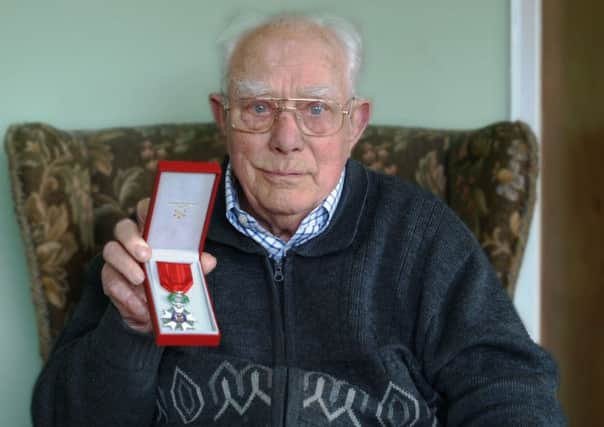Seaman Silver from Horncastle receives top French accolade for his D-Day heroism


Peter Silver,92, was the man of the hour on Saturday as a representative from The French Consulate congratulated him on receiving the Legion D’Honneur medal at a special ceremony at The Admiral Rodney Hotel.
Mr Silver, who is twice married and has a son and a daughter, grew up in Kent and retired in the town 30 years ago when he came to live in the area with his partner at the time Katie.
Advertisement
Hide AdAdvertisement
Hide AdPeter, real name Reginald (a story in itself) volunteered for the Navy with his best friend Duffy, as he was known, just days after their 18 birthdays.


He recalls: “We both wanted to join the Navy and decided to volunteer as soon as we became of age, instead of waiting to be called up.
“It’s funny really as everyone knows me as Peter, but on Saturday I was celebrated under my real name, Reginald, and that in itself is a story.
“When I was born I had thick black hair and my mother used to have a family pet, a black cat called Peter.
Advertisement
Hide AdAdvertisement
Hide Ad“So when my older brother George, one of three brothers, came to see me in hospital, he saw my black hair immediately, pointed at me and shouted Peter, and the name has stuck with me every since.”


So Peter, as he is now always known, began his training for the Navy at HMS Collingwood in Fareham.
Like many of his fellow seaman, he could not swim, but Mr Silver remembers the swim test they went through during training.
He recalls: “A lot of us couldn’t swim, myself included. There wasn’t any time for swimming lessons. So as long as we passed the swimming test we could continue. I remember that we were tested in a big tank used for the diving training. The lights were turned off and we were in pitch black.
Advertisement
Hide AdAdvertisement
Hide Ad“We had our life jackets on, of course, but we were put into the diving tank in the dark, thrown a line to tie around us in a set way and if the knot wasn’t good enough we were thrown back in again until we got it right.
“Luckily I managed it first time and that was the test.”
After training, Peter was based at HMS Mantis in Lowestoft, and served on e-boats, first a 70-ft motor gunboat, followed by a torpedo boat.
He spent many years at Lowestoft both before and after D-Day, right up until the war was over.
Peter mainly operated off the Dutch Coast and had two main roles, one to be the eyes on deck, looking out for enemy e-boats, and he was also a gunner, attacking German shipping with a 20mm Oerliton gun that he was strapped to with shoulder straps. It was at this point that Peter saw most of the action.
Advertisement
Hide AdAdvertisement
Hide AdHe added: “We did have to deal with a fair amount of action and were attacking the German boats quite often. I ended up getting a couple of scratches, but no major wounding. You were attached to the gun by shoulder straps and had a sight to look through to fire. There was very little protection, but it was the job we had to do.”
“There was no time to be scared because everything would happen all of a sudden. But we were as prepared as we could be for an attack. We were always training for it, every spare second we had.”
On D-Day itself, Peter had a very testing job that lasted all day and night, with no time for rest or a break in between.
He headed for Gosport and spent three weeks there and his job was to protect all of the big ships in the harbour from any attacks from German e-boats or submarines.
Advertisement
Hide AdAdvertisement
Hide Ad“We were the protective screen for all the big boats and made sure they were guarded and protected from enemy fire. I had to stay very alert all day and night up on deck and had nothing but my eyes to see what was coming.
“But lucky for me, we saw no action that day. It was a very tense day, but you had to stay alert no matter what. After the three weeks were over, I headed back to my base in Lowestoft.”
After the war, Peter spent a number of years back in his home of Kent and worked in a paper mill and a printing house.
He then went on to spend 25 years as an engineer, testing diesel engines.
Advertisement
Hide AdAdvertisement
Hide AdDespite spending 30 years being part of the Horncastle Royal British Legion, Peter still spends a lot of time out by the water. These days he makes the most of enjoying all of the spare time he has fishing. Whether it be fly-fishing or coarse, Peter said he has no intention of packing in his favourite pass time anytime soon.